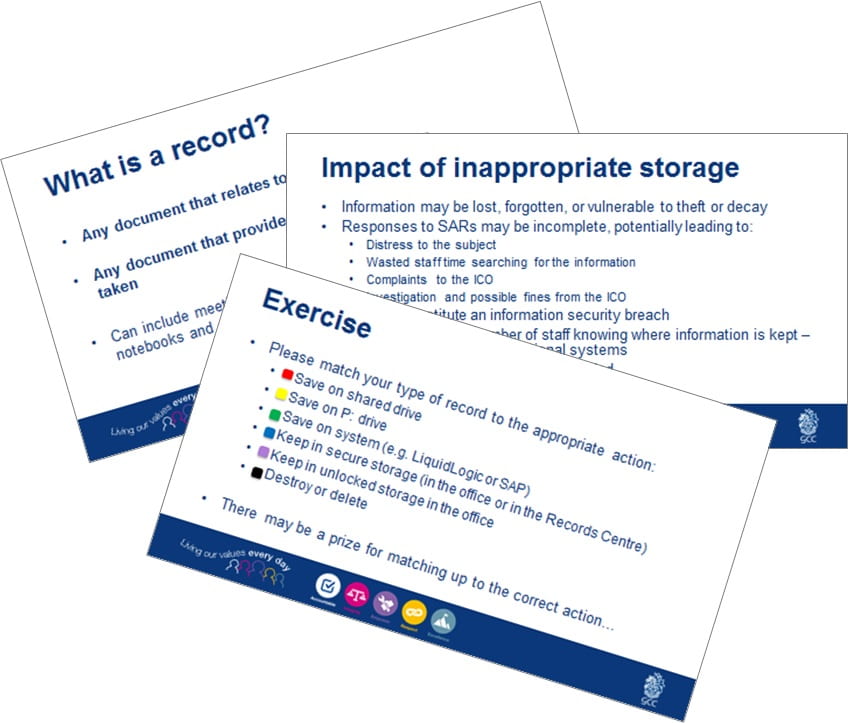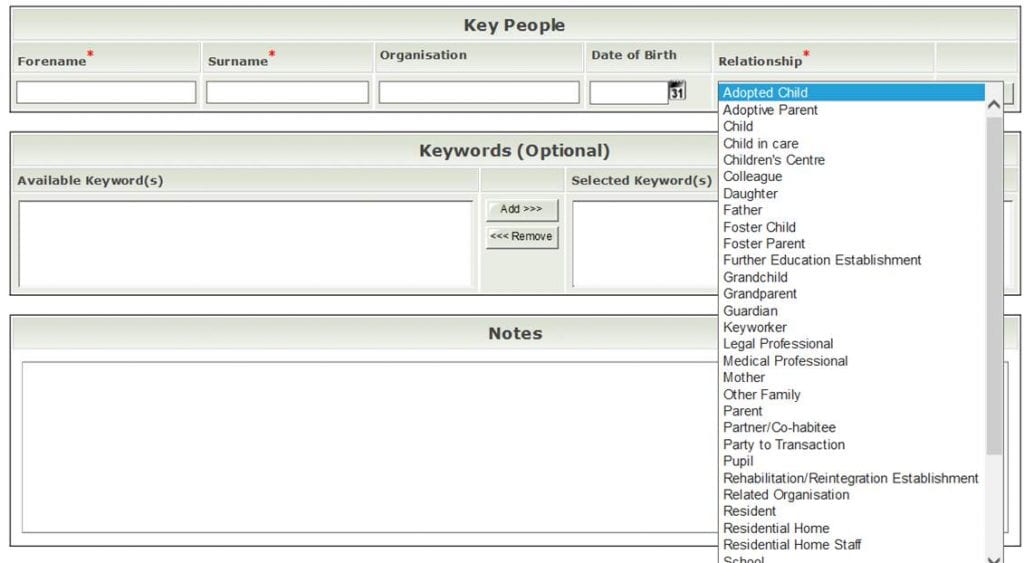Caring Records Management: A Case Study
By Victoria Hoyle, on 19 September 2019
This post has been kindly contributed by Michelle Conway (IMS Team Manager (Records)) and Imogen Watts (Corporate and Digital Records Manager) from Gloucestershire County Council.
Recently, at the MIRRA Symposium, we were reminded that organisations have a lifelong responsibility as the corporate “parents” of care-experienced individuals to safeguard their records and make this information available to them. While we, as information professionals, would wholeheartedly agree to these principles, the reality is that record-keeping and record-sharing practices historically have not always matched.
Our organisation, like many others, has not done things perfectly. However, over the last four years, we have been running a project to improve the accessibility of our historical childcare files and the information within them.
The Historical Children’s Records Project (HCRP) began in March 2016 with the aims to:
- Identify historical childcare files held across the council’s estate and transfer them to the central Records Centre where they would be indexed in our records database and placed into secure storage;
- Improve the indexing of historical childcare files already stored in the Records Centre. No small task, considering there were over 80,000 of these in storage!
How was this born, you ask? Well, the Independent Inquiry into Child Sexual Abuse’s (IICSA) requirement that organisations make children’s records accessible for inquiries (plus the subsequent moratorium on the destruction of children’s records) prompted us to take a long hard look at how records were being managed and to acknowledge that “J Smith” as a file title was an inadequate identifier. An external audit of the availability of the council’s safeguarding records also highlighted issues of identifying what and where records were being kept and the impact of this on responding adequately to subject access requests. The council judged that the risks were high enough to warrant funding for a project team and we have been able to secure funding on this basis year on year.
Initially, the project felt like a Pandora’s Box: visiting 55 council properties has demonstrated the weird and weirder places that uncatalogued records have been stored (including in the kitchen sink and roof rafters), with over 12,000 files transferred to the Records Centre in the project’s first year. Conducting records surveys as part of office moves and decommissioning of premises is now becoming part of business as usual, as we’ve recognised that if we aren’t proactive, records will literally become hidden.
The indexing process has been equally eye-opening. Taking a risk-based approach, we decided to prioritise administrative and case files from residential children’s homes. Records are indexed in our Records Centre database, RAFTS, and as we reviewed the file entries, we found that whilst files had basic metadata attached to them, this metadata was incomplete and didn’t accurately identify all the individuals whose information was contained in the files. For example, a case file for J(ane) Smith would primarily contain information about her but it would also hold key data relating to her parents – e.g. Peter Smith -; siblings; and caseworkers. We added key metadata (names; DoBs; relationships) to the database entries to ensure that if someone searched for information on Peter Smith, Jane’s file would come up in the search results, as well as any files where Peter was the main subject.
This work has positively supported the work of our Information Requests team, as it provides them with a greater certainty that when they search RAFTS, they are signposted to the information they need. This helps ensure care leavers are given all the information they are entitled to.
Through the work to improve the historical file index entries, the project team has amassed a wealth of knowledge on social care files through the years and the issues that have been rife in historical information recording practices – which vary dramatically over time. We’ve decided to use as much of this knowledge as possible to inform and improve current and future practice.
Since November 2018, representatives from our Records Management and Information Governance teams have been embarking on a programme to deliver information management training to staff across Children’s Services – from admin staff to practitioners to managers and service leads. Part of this training covers appropriate storage of files, what technically counts as a record, and (for practitioners) what information should be recorded – including how, where and when. The HCRP project team’s knowledge on historical issues in information recording has been invaluable to help identify potential gaps and to ensure we cover these.

Training is being delivered across the Council, to everyone involved in child social care recordkeeping.
This probably all sounds a bit dry, as information management is usually perceived to be… So we’ve done our best to try to make the training as much fun as possible. We get everyone involved and actively participating in tailored activities, including a game where you win a chocolate (of the mini variety) if you correctly match the document type to the appropriate storage location, a “what would you do?” exercise around a (fictitious) email being sent to the wrong (fictitious) person, and a handful of cartoon characters as case studies – for example, we’ve had Paddington Bear asking for his files (he was in foster care with the Brown family after all), and it turns out we found some (fictitious) files in a (fictitious) basement instead of the Funnybones skeletons (remember them?).
The feedback we’ve received from this training has been overwhelmingly positive, which is great to hear and shows that our aim of making it both fun and informative is working. Our main concern remains making sure we have an impact on the way things are done. We have seen some changes already, particularly around secure handling of information, so we seem to be on the right track. It does look like it might be quite a long road, especially since the goalposts shift slightly when new information comes to light, for example we’d now like to tie in the recommendations from the MIRRA project and help the council adopt that child-centred way of recording information. It may take some time to get these changes planned, approved, understood and embedded, as significant changes tend to, but as long as we’re moving forward, we’ll still be making progress and improving things as much as we can. Sometimes small steps are all that you can take, but as long as we keep our eyes fixed on the end goal we’ll get there in the end!
More information about Gloucestershire’s Historical Children’s Records Project is included in our downloadable best practice case study leaflet. Later this year MIRRA will release a set of Principles for Caring Recordkeeping and a toolkit to support organisations to meet them.
 Close
Close



